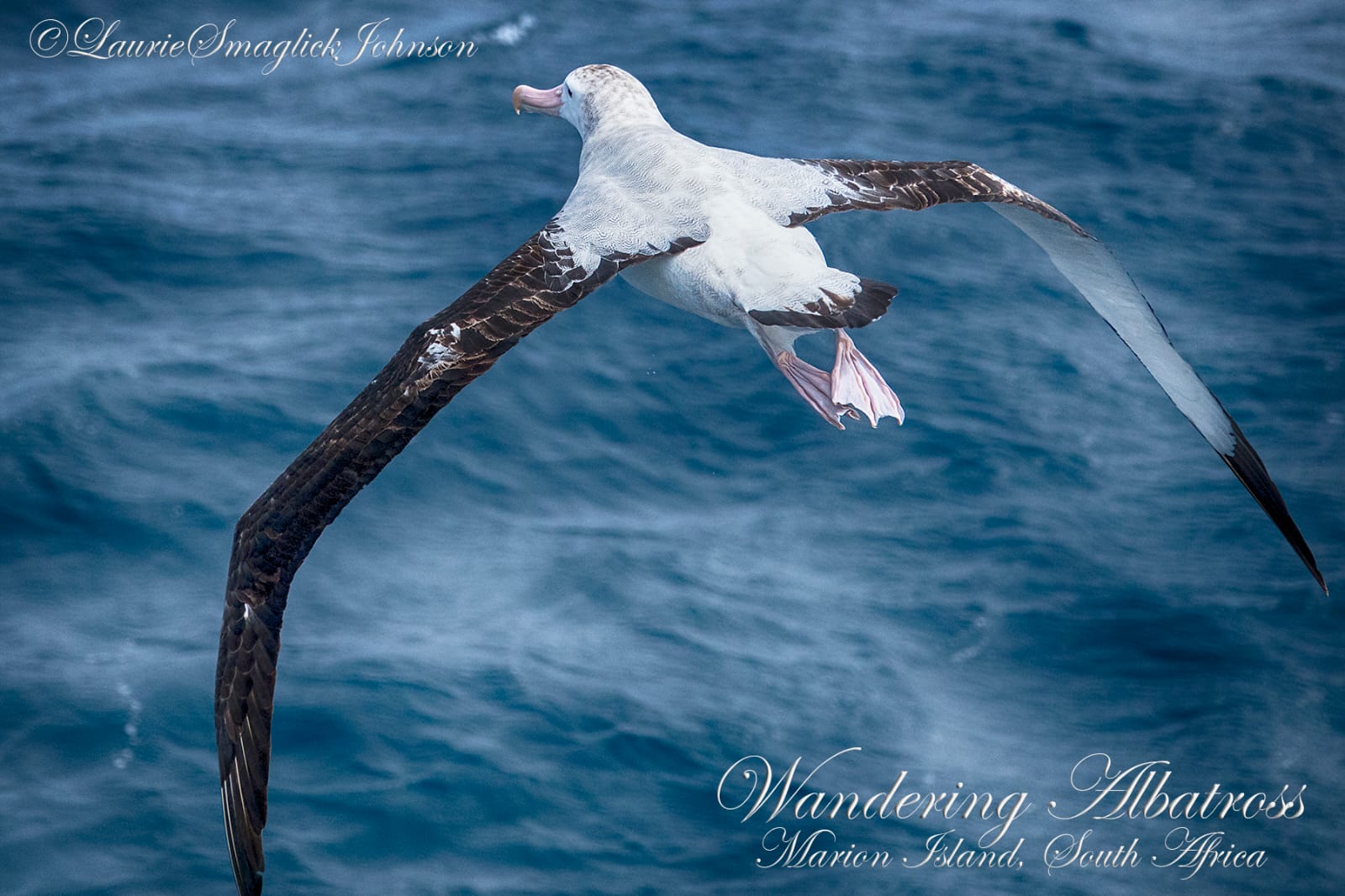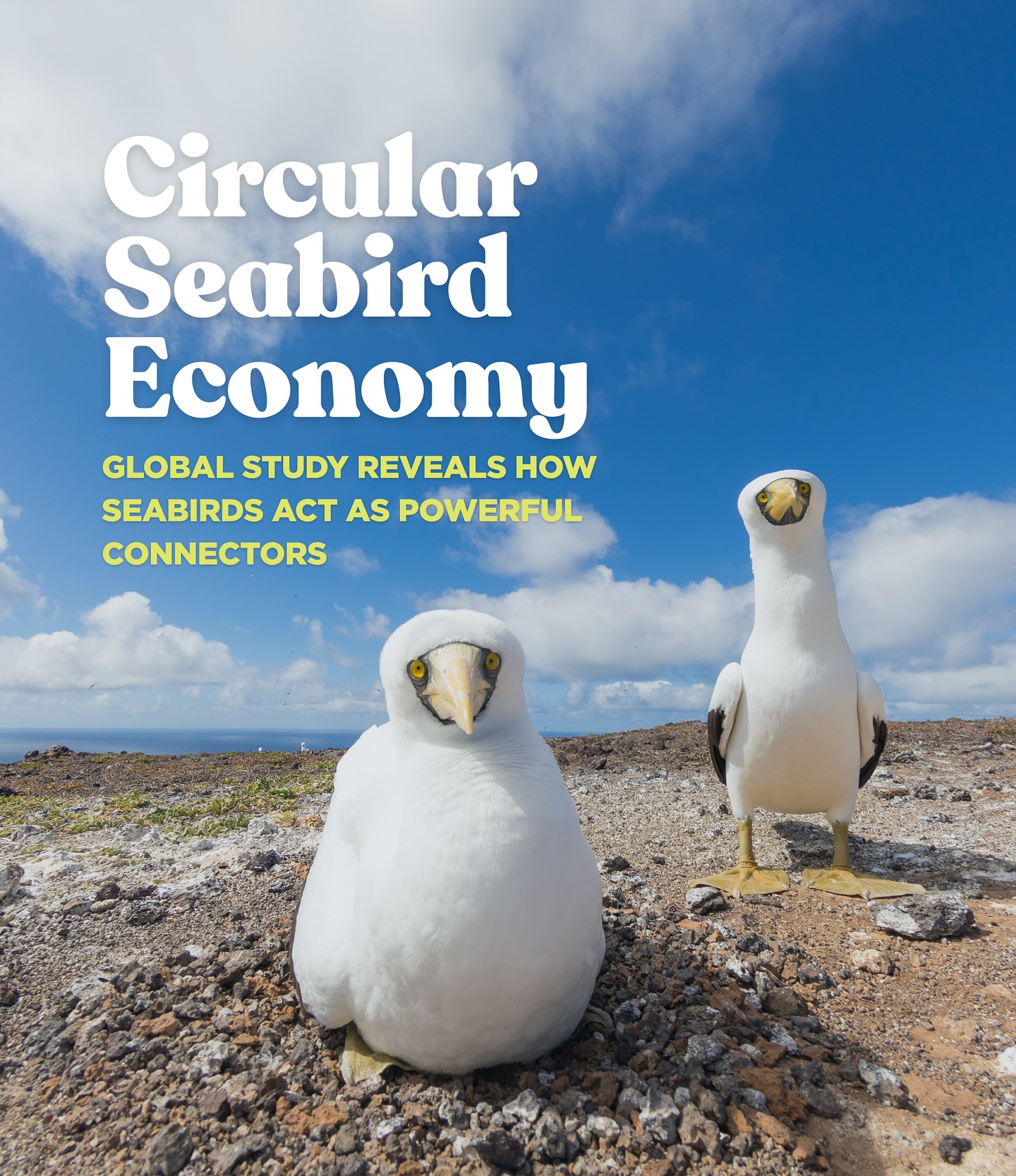 “Here’s looking at you”. Masked Boobies, photograph from Island Conservation
“Here’s looking at you”. Masked Boobies, photograph from Island Conservation
Holly Jones (Department of Biological Sciences, Northern Illinois University, DeKalb, USA) and colleagues have published a review article in the journal Nature Reviews Biodiversity on the “Circular Seabird Economy” – stated as a natural process where seabirds transfer nutrients from ocean to land and back again, shaping biodiversity and ecosystem health across vast scales.
The review article’s abstract follows:
“Nearly a third of seabird species are at risk of extinction, rendering them among the most threatened bird taxa globally. The decline in seabird populations has major ramifications for their associated ecosystems. An expansive literature covers seabird impacts on their breeding islands, and growing research expands understanding of the circular seabird economy — cross-ecosystem connections of seabirds from oceans to islands, and back to nearshore marine ecosystems, mainly driven by nutrient transfer. Amid the twin biodiversity and climate crises, maintaining and restoring the circular seabird economy is one way to achieve large-scale, cross-ecosystem impacts with simple and time-tested conservation methods. This Review summarizes researchers’ understanding of the circular seabird economy and outlines goals for future research. Historically, research has focused on terrestrial impacts, with emerging research explicitly studying the cross-ecosystem impacts of seabirds. We identify substantial knowledge gaps, with research needed to understand how the circular seabird economy changes with space, time, across biomes and with island size. Emerging analytic and monitoring tools will help to propel this research forward. Many coastal communities, especially Indigenous people, rely on seabirds for their livelihoods and cultural connections, and so taking a people-centred approach incorporating Indigenous knowledge and perspectives is critical moving forward.”
Reference:
Jones, H.P., Appoo, J., Benkwitt, C.E. et al. 2025. The circular seabird economy is critical for oceans, islands and people. Nature Reviews Biodiversity doi.org/10.1038/s44358-025-00099-w.
John Cooper, Emeritus Information Officer, Agreement on the Conservation of Albatrosses and Petrels, 05 November 2025

 English
English  Français
Français  Español
Español 
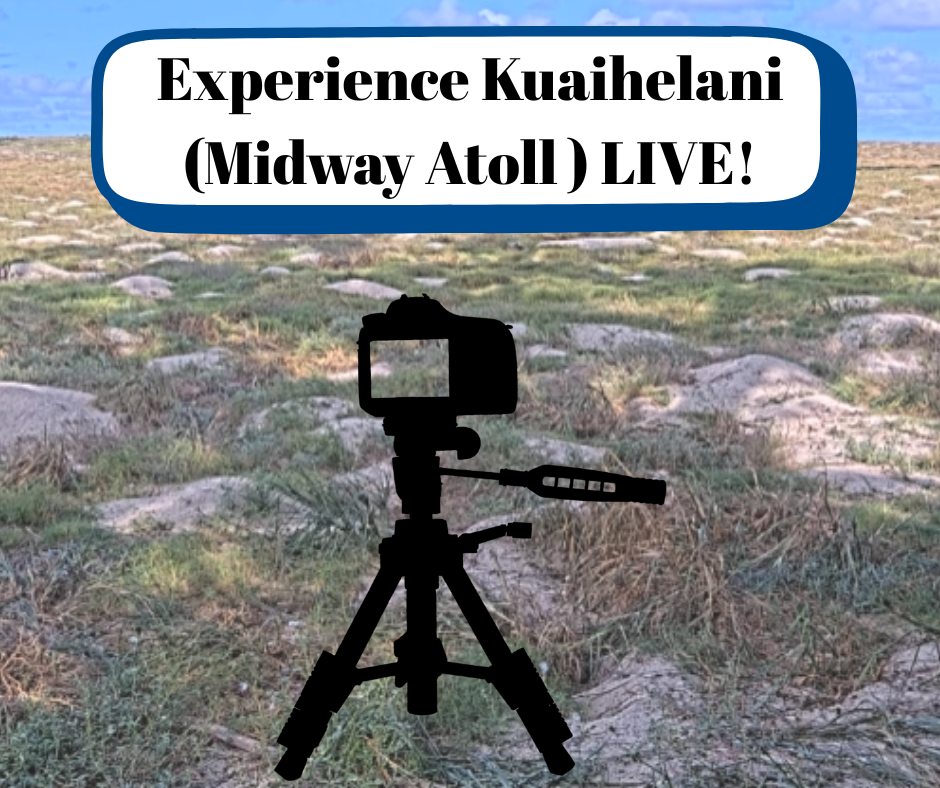
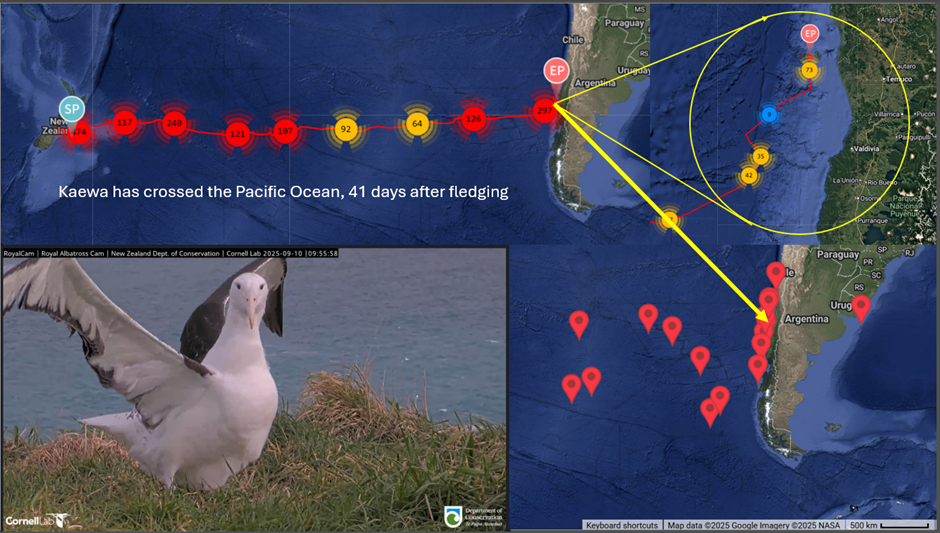
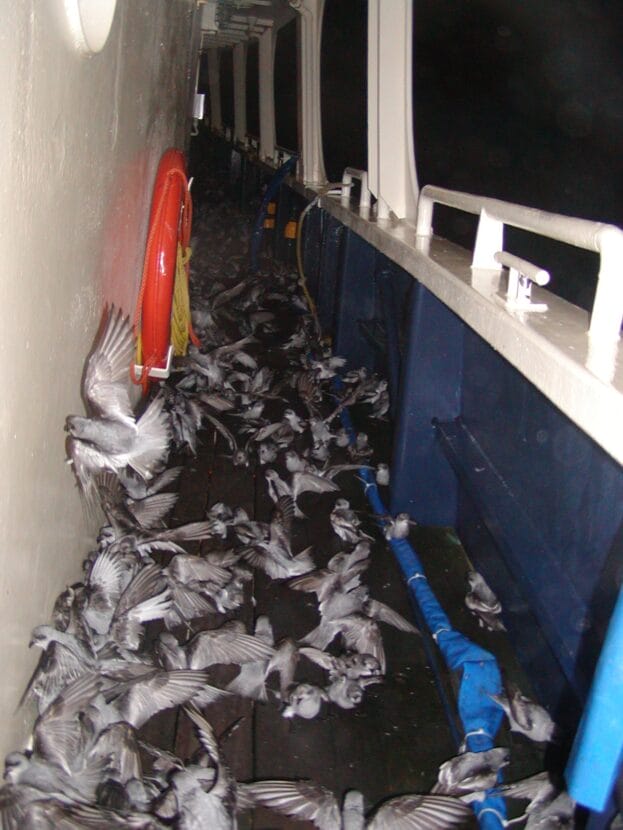 A bird storm of Fork-tailed Storm Petrels Hydrobates furcatus strikes the R/V Tiĝlax̂ near Kasatochi Island in 2003, photograph by Jeff Williams, USFWS
A bird storm of Fork-tailed Storm Petrels Hydrobates furcatus strikes the R/V Tiĝlax̂ near Kasatochi Island in 2003, photograph by Jeff Williams, USFWS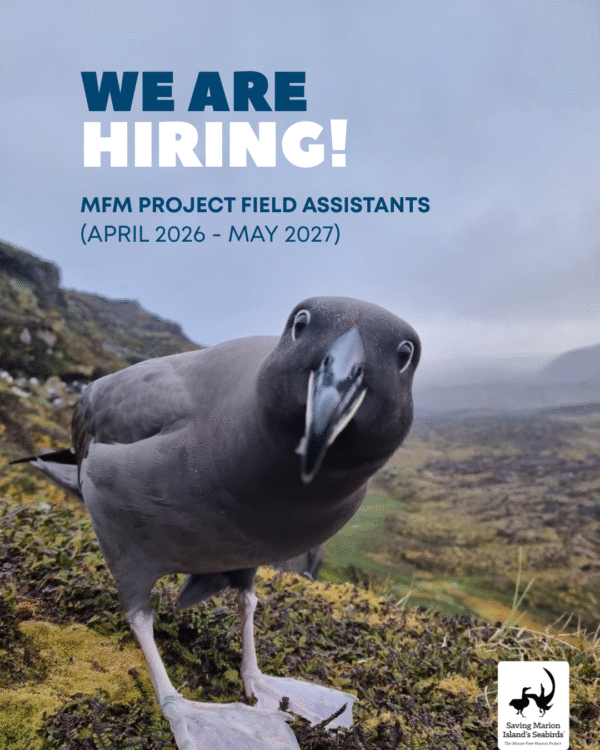 A quizzical Sooty Albatross on Marion Island
A quizzical Sooty Albatross on Marion Island